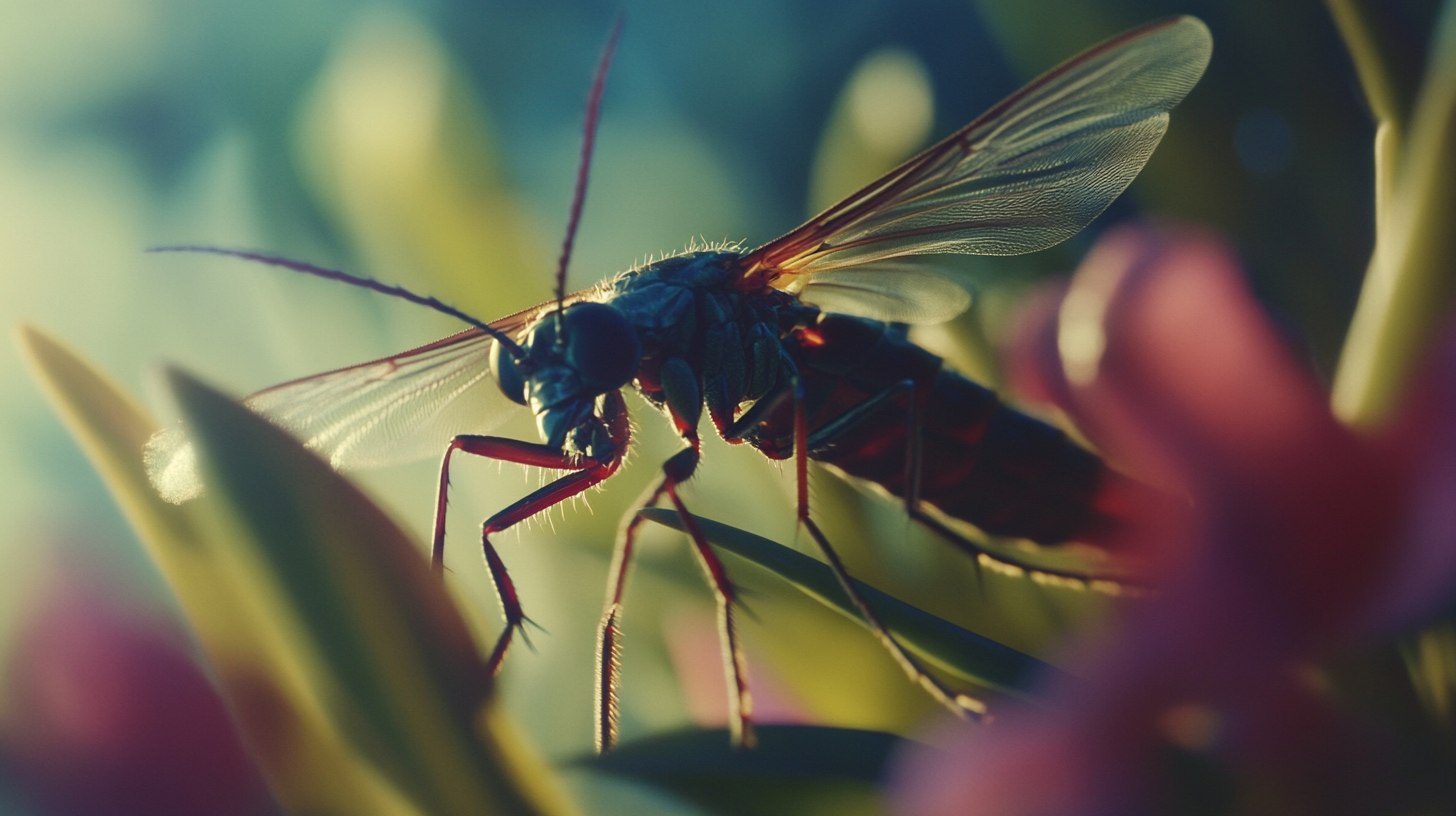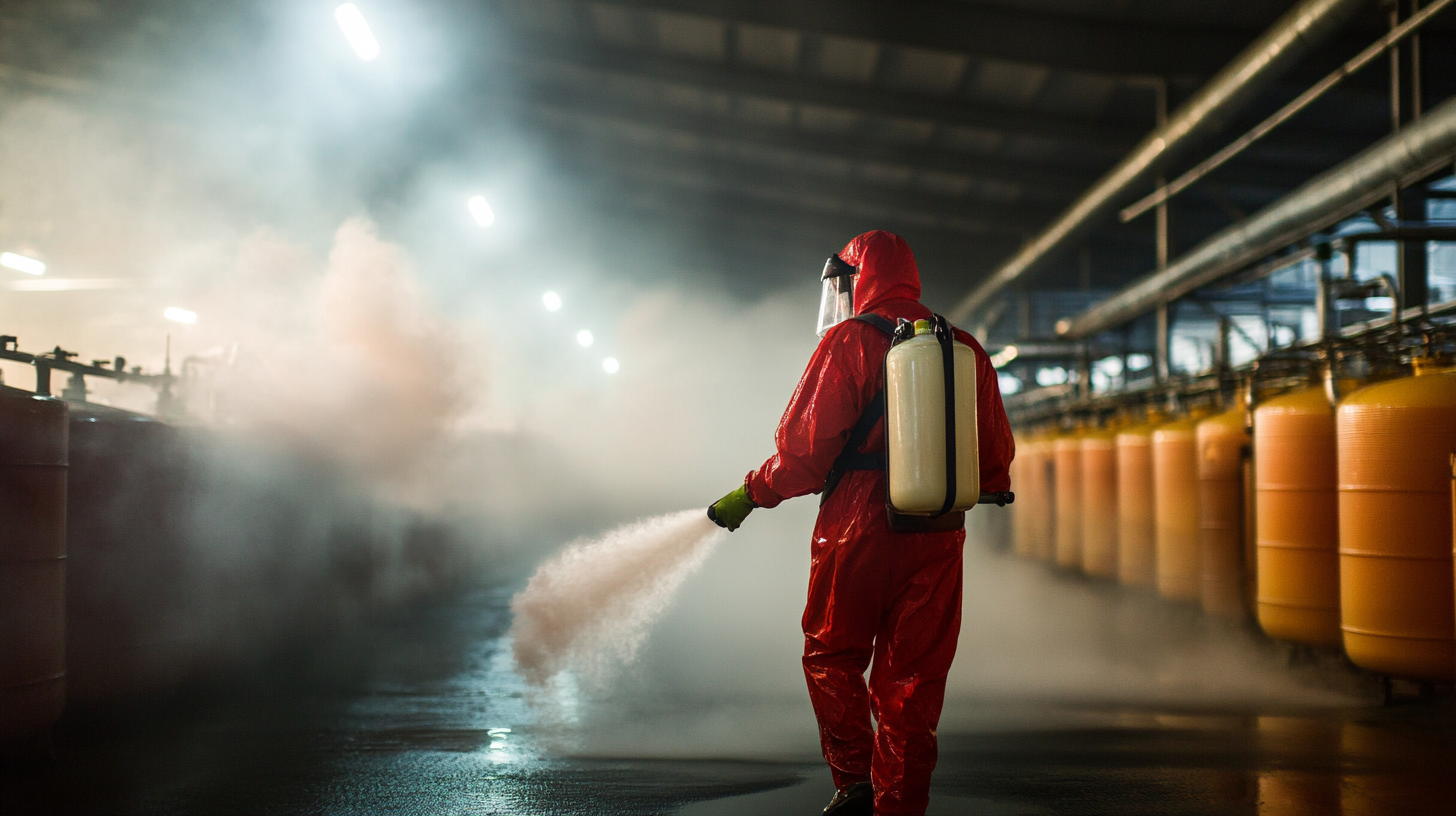 0551-68500918
0551-68500918 





You know, the Global Insecticide market has really changed a lot in recent years, especially with all the back-and-forth trade stuff between the U.S. and China. Even with the tariffs in place, those Chinese insecticide manufacturers have been pretty impressive, showing both resilience and a good bit of growth. They're clearly becoming a key player in agriculture worldwide. A report from Mordor Intelligence noted that the global insecticide market was worth about $13.6 billion back in 2020, and it’s expected to hit $18.3 billion by 2026, thanks to more folks wanting effective insecticide products. Sure, big names like Syngenta and BASF have been in the driver's seat for ages, but now companies like Haoyi and Fangying from China are stepping up, proving they can compete with their affordable production methods and smart formulations. As the trade scene keeps changing, it’s fascinating to see how these manufacturers are not just surviving but actually thriving despite the tariffs. It really highlights a major shift in where agricultural chemicals are sourced from globally.

You know, it’s pretty interesting to see how resilient Chinese insecticide manufacturers have been, especially with all the tariffs flying around lately. It’s like, while many exporters are really feeling the crunch from these trade tensions between the U.S. and China, these manufacturers have found a way to adapt. They’re really making the most of their established supply chains, keeping costs low, and using some pretty innovative production methods to keep their prices competitive and hold onto their market presence.
And get this – the demand for insecticides isn’t slowing down anytime soon! With agriculture booming and the need for pest control growing all around the globe, Chinese manufacturers are stepping up. They’re diversifying their product lines and really focusing on quality. This drive for innovation is allowing them to not just weather the tariff storm but actually find new opportunities in emerging markets. It’s like they’re proving that when faced with challenges, they can turn those roadblocks into stepping stones. Honestly, it’s a testament to the strength and creativity of the Chinese manufacturing scene.
This chart shows the sales growth of Chinese insecticide manufacturers over the past five years amid the challenges posed by US-China tariff policies. The data reflects their ability to adapt and thrive despite economic pressures.
You know, with U.S. tariffs on the rise, Chinese insecticide manufacturers are really stepping up their game to stay ahead in the agricultural scene. Take Innovation Meiland (Hefei) Co., LTD., for example. They're really leading the charge, putting a lot of effort into coming up with new pesticide products and smarter formulations. It’s pretty impressive how they’re not just focusing on making their products more effective but are also making sure they meet international standards. This is a clever way to dodge some of the negative fallout from those pesky tariffs.
On top of that, a lot of Chinese firms are getting smart with tech and sustainable practices to catch global attention. They’re all about creating eco-friendly options that appeal to folks who care about the environment. Plus, they’re working on making their production processes more efficient to save some bucks. With their dedication to R&D, Meiland is in a really good spot to tackle these issues head-on. Instead of just hanging on by a thread, these Chinese insecticide manufacturers are actually carving out fresh paths to growth and success on the world stage.
Wow, the recent spike in U.S.-China tariffs has really shaken up global insecticide supply chains, especially for manufacturers in China. With those tariffs hitting a whopping 145%, these companies are feeling the pinch because their operational costs are climbing and competition is getting tougher. But here’s the cool part: despite all these difficulties, many Chinese insecticide producers are getting creative. They’re diversifying their markets and boosting their domestic production capabilities. According to industry buzz, China’s share of the global Agrochemical Market is expected to grow significantly, hitting around 30% by 2025. This shift really shows how resilient Chinese manufacturers are as they navigate this tricky trade landscape.
But it’s not just insecticides that are feeling the heat; U.S. tariffs are affecting a bunch of agricultural products too, and that’s causing waves across different sectors. For example, U.S. agricultural exports to China have dropped sharply, with retaliatory tariffs soaring to about $21 billion—yikes! As a result, many farmers in the U.S. are staring down an uncertain future, which could mean lower crop yields and higher input costs. Meanwhile, the chemical industry in North America is also struggling with all these hefty import duties, which makes international supply chains a real headache. It's forcing manufacturers to rethink their strategies and focus more on local production. This ongoing trade spat really highlights a major turning point in the global insecticide market as companies deal with the challenges of tariffs and changing consumer needs.
You know, it’s pretty wild how the whole U.S.-China tariffs situation is shaking things up. While there's been a lot of chatter about tariffs jumping to 145%, Chinese insecticide manufacturers are actually seeing a surprising boost in demand. Sure, these new tariffs have put a squeeze on exports, but it turns out that the insecticide market is more resilient than we might expect. With U.S. farmers on the lookout for effective pest control, especially with rising costs and all those supply chain hiccups, they’re increasingly turning to Chinese insecticides. Even with the added tariffs, these products are still holding their own price-wise.
It’s fascinating to see how U.S. farmers are adjusting to the pressures of the trade war. They’re making a strategic shift that reflects not just their immediate needs but also a growing interest in sustainable farming practices. Some of these Chinese insecticides actually fit the bill for those rigorous agricultural standards they have to meet. Plus, as the global agrochemical market keeps growing—thanks to new tech and that constant push for innovative crop protection—demand for these specialized products from China is likely to continue climbing. This really goes to show that even when trade barriers pop up, market needs can lead to unexpected growth opportunities for manufacturers. It's a pretty complex dance between trade policies and farming practices, isn’t it?

With the trade tensions heating up between the U.S. and China, it's a pretty critical moment for Chinese insecticide manufacturers. I mean, to keep their heads above water in the global market, they've really got to prioritize improving the quality of their products. By jumping on board with the latest tech and sticking to international safety standards, they’re not just keeping up with global demands; they’re also making a name for themselves as reliable and innovative. This focus on quality really helps them stand out in a crowded field, which is key to winning over customers abroad.
And, here’s a neat tip: if businesses want to keep up in the international game, investing in research and development is essential. When manufacturers take the time to understand what international markets really want, they can adjust their products accordingly, which can lead to happier customers all around.
Plus, a bunch of Chinese insecticide producers are teaming up with global companies to swap knowledge and learn best practices. This teamwork is great for picking up crucial insights into quality management systems and meeting regulatory standards – both of which are must-haves for success in international markets. It’s all about mixing local know-how with global standards to crank out top-notch insecticides.
Oh, and one more thing: building strong partnerships can open up access to tons of valuable resources and networks that make it easier to break into new markets. In the end, this kind of collaboration helps spark growth and innovation.
| Manufacturer | Location | Annual Revenue (Million USD) | Market Share (%) | Export Percentage (%) | Quality Certifications |
|---|---|---|---|---|---|
| Syngenta China | Nanjing | 1500 | 18 | 30 | ISO 9001, ISO 14001 |
| Zhejiang Hisun Pharmaceutical | Zhejiang | 800 | 12 | 25 | GMP, ISO 9001 |
| Shandong Dahua Group | Shandong | 600 | 10 | 20 | ISO 14001, OHSAS 18001 |
| Fengshan Group | Hubei | 450 | 8 | 15 | ISO 9001 |
Chinese insecticide makers are really finding their way through the tricky U.S.-China tariff situation, showing some serious resilience and creative thinking. A recent analysis points out that there's a notable shift in export patterns, which hints at some juicy investment opportunities within the sector. With global PMI looking like it’s about to bounce back and overseas stocks needing a little replenishment, the export chain is gearing up for some good times ahead. This is super important for companies that are eager to broaden their market presence on an international scale.
Now, tariffs can be a bit of a headache, but they’re also pushing manufacturers to step up their game in terms of competitiveness and efficiency. We’ve seen reports that many companies are boosting their production capabilities and diversifying their products to meet global demands. This strategic shift not only helps them deal with those pesky tariff challenges, but it also keeps Chinese manufacturers in sync with what the international market is after.
**Pro Tip:** It’s a good idea for companies to keep a close eye on global market trends and tweak their strategies as needed. Investing in R&D can really set them apart in this ever-changing landscape. Plus, teaming up with local distributors in foreign markets could make their entry smoother and boost brand visibility. By taking these proactive steps, what seemed like tariff troubles could actually turn into some real growth opportunities in the insecticide sector.

: Chinese insecticide manufacturers are facing significant challenges due to rising tariffs, with recent tariffs increasing to as much as 145%. However, they have shown remarkable adaptability in overcoming these obstacles.
They have leveraged established supply chains, cost-efficiency, innovative production methods, and diversified product lines to maintain competitive pricing and secure a stable market presence.
Chinese firms are focusing on research and development of new pesticide products, leveraging advanced technology and sustainable practices, and investing in eco-friendly formulations to appeal to the global market.
The demand is driven by increasing agricultural needs and pest control requirements worldwide, as U.S. agricultural producers seek effective solutions amidst rising costs and supply chain disruptions.
U.S. farmers are strategically pivoting by increasingly turning to competitively priced Chinese insecticides, which meet rigorous agricultural standards and align with sustainable farming practices.
Chinese manufacturers are finding growth opportunities through innovation, enhancing product quality, and expanding their reach in emerging markets, demonstrating the resilience and ingenuity of the Chinese manufacturing sector.
Innovation plays a crucial role by enabling manufacturers to enhance product effectiveness, ensure compliance with international standards, and adapt to changing market demands, helping them thrive despite tariff challenges.
As the global agrochemical market grows, driven by technological advancements and a need for innovative crop protection strategies, the demand for specialized products from Chinese manufacturers is expected to rise, even amidst trade barriers.







